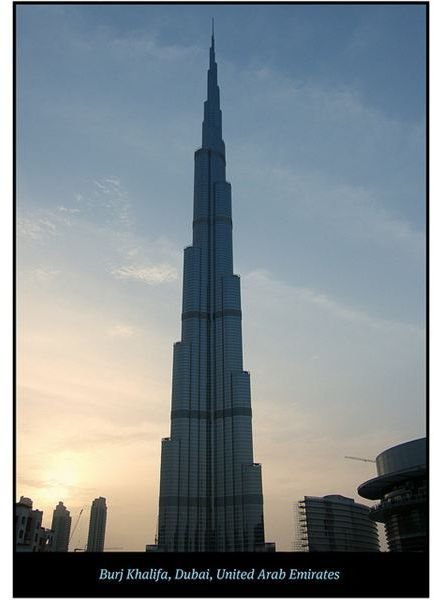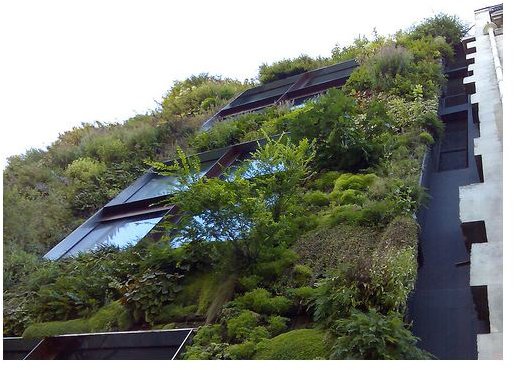Modern Architecture - Values of Architecture and Modern Life
The relationship between humans and buildings has long been a superficial one. Our homes shelter us from inclement weather, from oppressive heat and brutal cold; office buildings provide a convenient place to gather and work. But always there has been a static kind of relationship: a building is constructed; it has four walls and a roof. There are windows, of a varying number and location. And that’s about it. The values of architecture and modern life have diverged, but that is steadily changing for the better.
But today’s designers have begun along a radically different path, inspired in part by nature. This new generation of architects has a vision of buildings which do more than shelter us: they will nourish us, keep us healthy, help maintain mood, and boost productivity. Working inside such a building will be a pleasure. The relationship between humans and buildings would, in effect, benefit from a kind of synergy, with the building taking an active interest in our well-being.
Image: Flickr - Markhillary - Office covered in plants
Trending Green
“Green”, or environmentally friendly, design is the biggest buzzword in the industry right now. But that’s not what I’m talking about, at least not directly. When I say that buildings are trending green, I mean it quite literally: designers are starting to incorporate plants into the office and even into buildings themselves. Plants have a number of benefits in architecture. One of the most surprising is their psychological benefit: scientists have shown that workers in an office with plants have 12% higher productivity and significantly reduced stress compared to those in offices without plants. This effect comes just from looking at the plants, which seems to have a calming effect.
But plants have some powerful benefits beyond psychological ones. They help cool the air through a process called transpiration, which also helps maintain proper humidity levels. In fact, plants maintain a humidity range between 30 and 60%, which falls right into the ideal humidity for humans. Buildings with large numbers of plants are able to save on operation and maintenance costs, since the plants are effectively taking the place of heavy machinery. In fact, the Associated Landscape Contractors of America state that well-selected and properly placed plants may decrease heating and cooling costs by up to 20 percent.
Plants also naturally remove toxins from the air. They can lower the levels of volatile organic compounds (VOC’s), such as benzene and formaldehyde, which contribute to something called Sick Building Syndrome. Most modern building materials, including carpets, paints, and many plastics, emit toxins that make humans sick. This is the opposite of building-human synergy: the buildings most people work in actually make them sick! This is obviously a major oversight in architecture, and one that plants address admirably. They also do this cleansing job cheaply; plants are inexpensive and won’t “break” provided they receive a little water and some sunlight. Comparable machine solutions cost hundreds or thousands of dollars and might not even do a particularly good job.
Using Natural Lighting
The harsh glare of fluorescent lighting is an unfortunate, albeit common, design choice in most modern offices. Fluorescent lighting can cause eye strain and headaches in sensitive individuals, and may negatively affect mood. Sunlight, on the other hand, seems to have a number of benefits; these benefits include boosting productivity and helping regulating of circadian rhythms.
Financially, too, natural lighting has significant benefits: sunlight is free, while electric lighting makes up anywhere from 25 to 40% of a typical building’s energy usage. With these benefits in mind, architects have begun designing buildings to make maximum use of natural light from the sun. This includes using skylights and windows to maximize incident light, which replaces electric lighting. Increasingly, green buildings are incorporating light-sensing devices which turn off electric lighting when sunlight is suitably intense.
Natural Ventilation
Another way of saving on energy costs while promoting well-being of building occupants is to make use of natural ventilation. Engineers use either stack ventilation or wind ventilation to accomplish a feat that is normally performed by HVAC machinery. Wind-driven ventilation uses roof-mounted ventilation devices that derive air flow from wind pressure, minimizing resource usage. Stack ventilation, on the other hand, uses temperature-driven pressure differences. Stack ventilation is less common than wind-driven ventilation, though modern systems may use both to maximize efficiency. Proper development of wind ventilation systems (also called roof mounted ventilation) requires analysis of wind patterns using a CFD tool such as UrbaWind.
Examples in Modern Architecture

Even as they push the boundaries of what has traditionally been considered to be possible, modern skyscrapers incorporate aspects of green, thoughtful architecture into their design. The Burj Khalifa tower, for example, is over half a mile tall and must brave the extreme temperatures and conditions of Dubai. To do this, the tower’s designers made extensive use of natural lighting and enhanced views by creating a Y-shaped design. They also used reflective glazing to minimize the heating effect of incident solar radiation, as well as to deflect most of the harmful UV spectrum. Another creative design aspect of the Burj Khalifa collects condensation from the outside air as it is cooled and redistributes it for watering and for the outdoor fountains.
Image - U-g-g-b-o-y - I am Burj Khalifa
Changing the Building’s Role
Another way the role of the building is changing has the potential to revolutionize modern life. With the coming advent of low cost, high efficiency power-producing devices, such as solar PV paints and quantum dots (both of which generate electricity from sunlight and could be applied unobtrusively to just about any building), skyscrapers may begin to generate their own power. In fact, these buildings could generate significant amounts of electricity (sunlight has approximately 1 kW/m2 of energy) and potentially replace power plants in a decentralized grid.
Some forward-thinking scientists even raise the possibility of massive farms housed inside skyscrapers. As the price of land and freshwater continues to rise and the effect of pesticides comes under increasing scrutiny, farm skyscrapers may come to dominate agriculture. This design would save water and eliminate issues with run-off contaminating aquifers. It would also greatly increase the productivity of a given area of land, as floor upon floor of crops could fit on a small square of earth.
Today’s architects are revolutionizing the building’s role in life. Some are working towards making the indoors as much like outside as possible by incorporating natural light and plants, while others are taking traditionally outdoor pursuits like agriculture inside. It’s tough to say which of these trends will catch on and which will fall by the wayside, but the traditional idea of the building is definitely undergoing a revolution.
Sources
The Benefits of Plants in the Office
PLANT/SOIL CAPACITIES TO REMOVE HARMFUL SUBSTANCES FROM POLLUTED INDOOR AIR (PDF)
